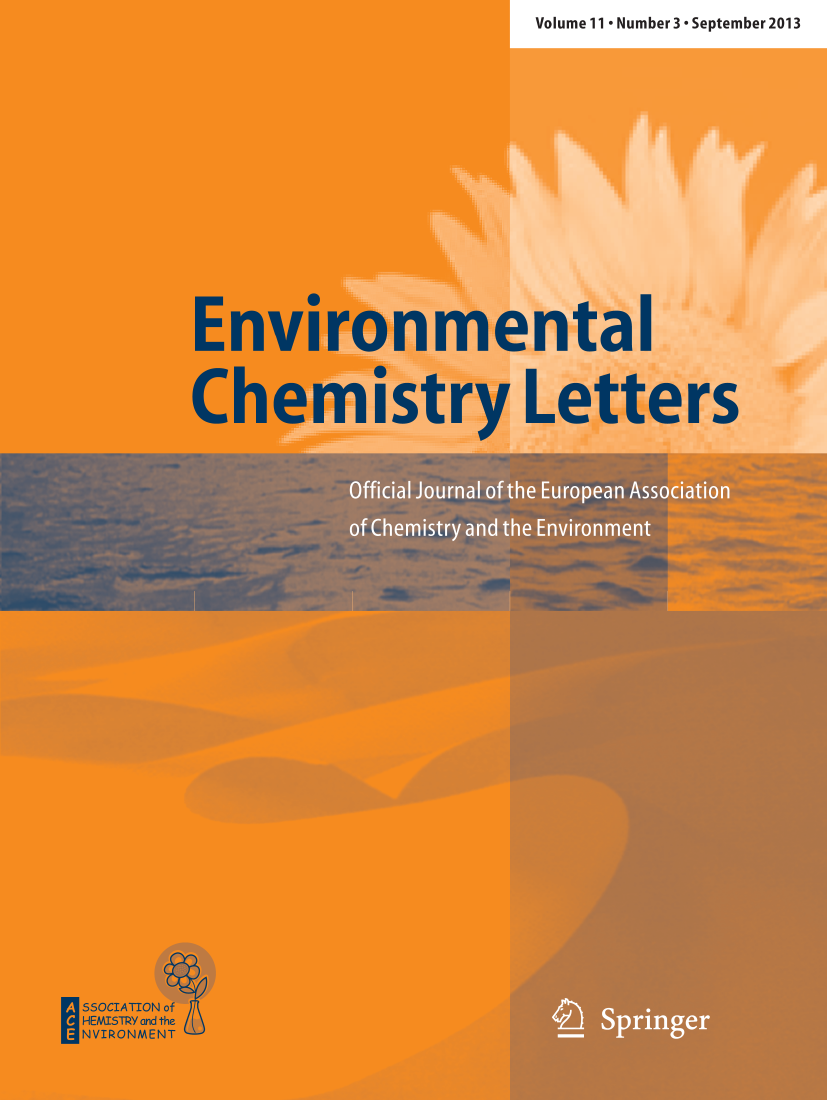Chemical and microalgal conversion of carbon dioxide into fuels and materials: a review
IF 20.4
2区 环境科学与生态学
Q1 CHEMISTRY, MULTIDISCIPLINARY
引用次数: 0
Abstract
The rapid climate warming caused partly by rising carbon dioxide levels calls for efficient methods to capture and convert carbon dioxide into energy and chemicals. Here, we review microalgal carbon dioxide capture with focus on photosynthesis, chemical adsorbents and catalysts, factors controlling carbon sequestration, cultivation systems, artificial intelligence and modeling, and applications. Carbon sequestration is controlled by feed gas composition and flow rate, temperature, pH, light, humidity, dissolved oxygen, shear stress, nutrients, and species, e.g., green algae and cyanobacteria. Microalgal biomass can be converted into biofuels, pharmaceuticals, biopolymers, and food.
化学和微藻将二氧化碳转化为燃料和材料:综述
快速的气候变暖部分是由二氧化碳水平上升引起的,这需要有效的方法来捕获二氧化碳并将其转化为能源和化学物质。本文从光合作用、化学吸附剂和催化剂、固碳控制因素、培养系统、人工智能和建模以及应用等方面对微藻的二氧化碳捕集进行了综述。碳固存受原料气组成和流量、温度、pH、光、湿度、溶解氧、剪切应力、营养物质和物种(如绿藻和蓝藻)的控制。微藻生物量可以转化为生物燃料、药品、生物聚合物和食物。
本文章由计算机程序翻译,如有差异,请以英文原文为准。
求助全文
约1分钟内获得全文
求助全文
来源期刊

Environmental Chemistry Letters
环境科学-工程:环境
CiteScore
32.00
自引率
7.00%
发文量
175
审稿时长
2 months
期刊介绍:
Environmental Chemistry Letters explores the intersections of geology, chemistry, physics, and biology. Published articles are of paramount importance to the examination of both natural and engineered environments. The journal features original and review articles of exceptional significance, encompassing topics such as the characterization of natural and impacted environments, the behavior, prevention, treatment, and control of mineral, organic, and radioactive pollutants. It also delves into interfacial studies involving diverse media like soil, sediment, water, air, organisms, and food. Additionally, the journal covers green chemistry, environmentally friendly synthetic pathways, alternative fuels, ecotoxicology, risk assessment, environmental processes and modeling, environmental technologies, remediation and control, and environmental analytical chemistry using biomolecular tools and tracers.
 求助内容:
求助内容: 应助结果提醒方式:
应助结果提醒方式:


